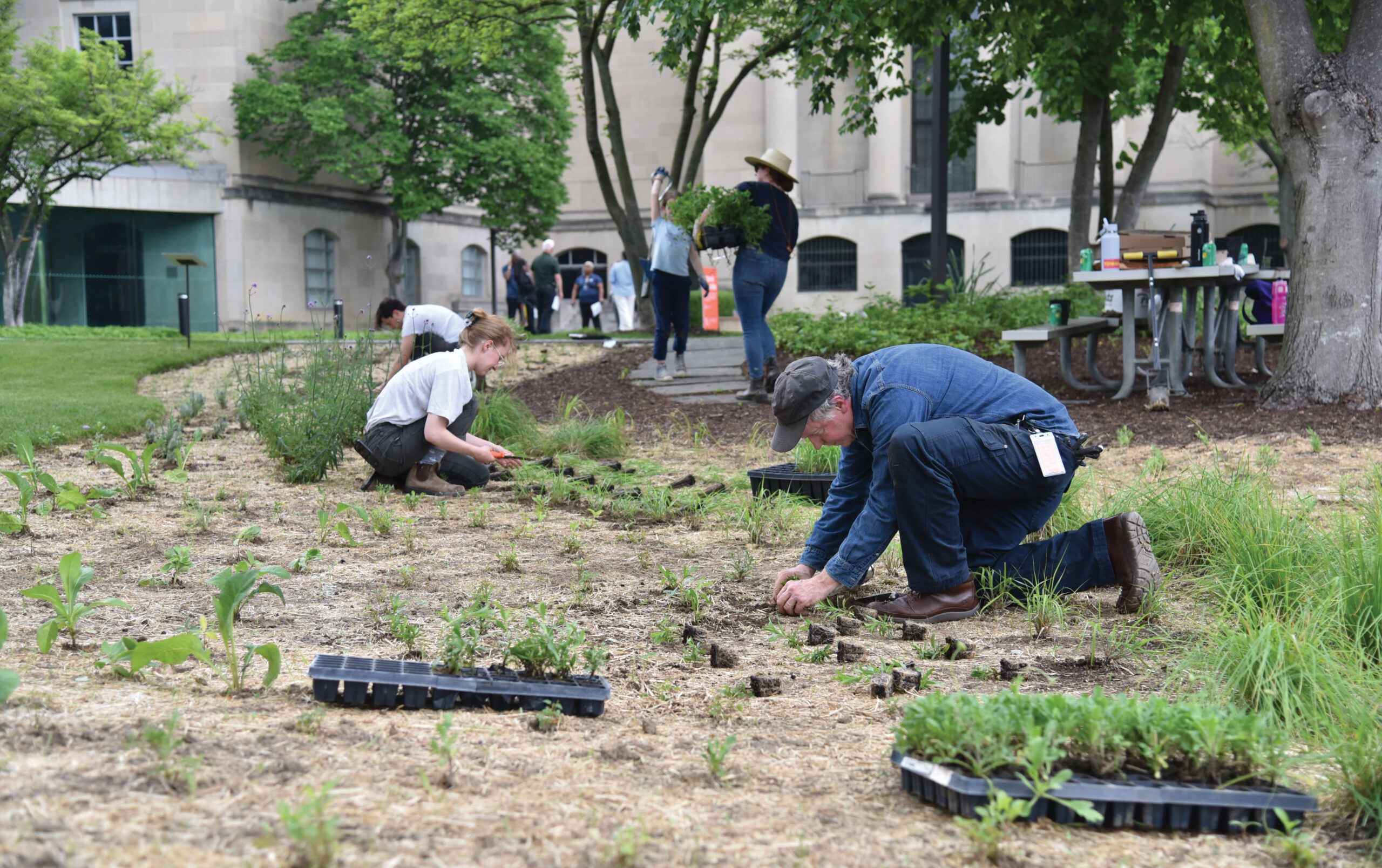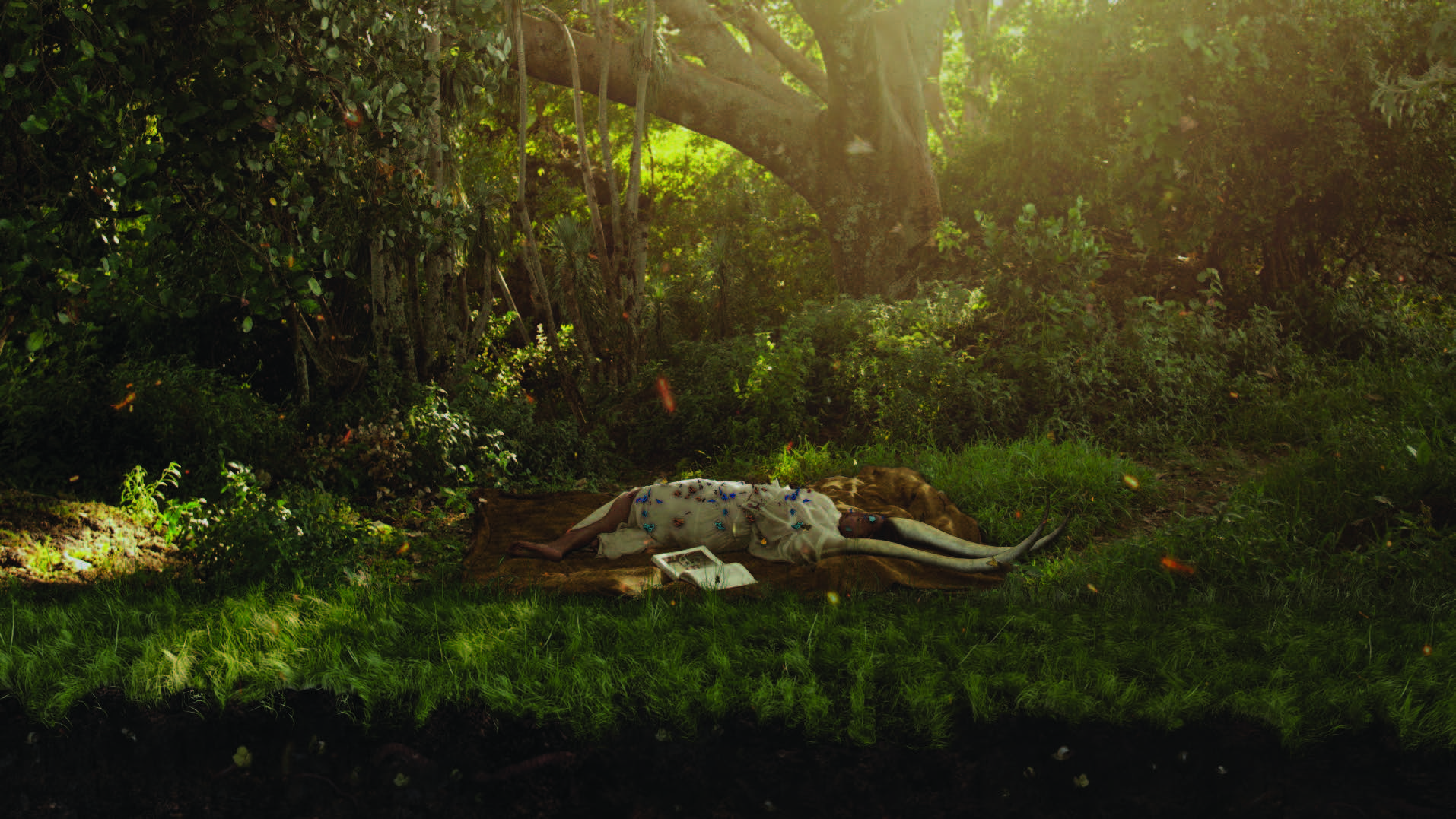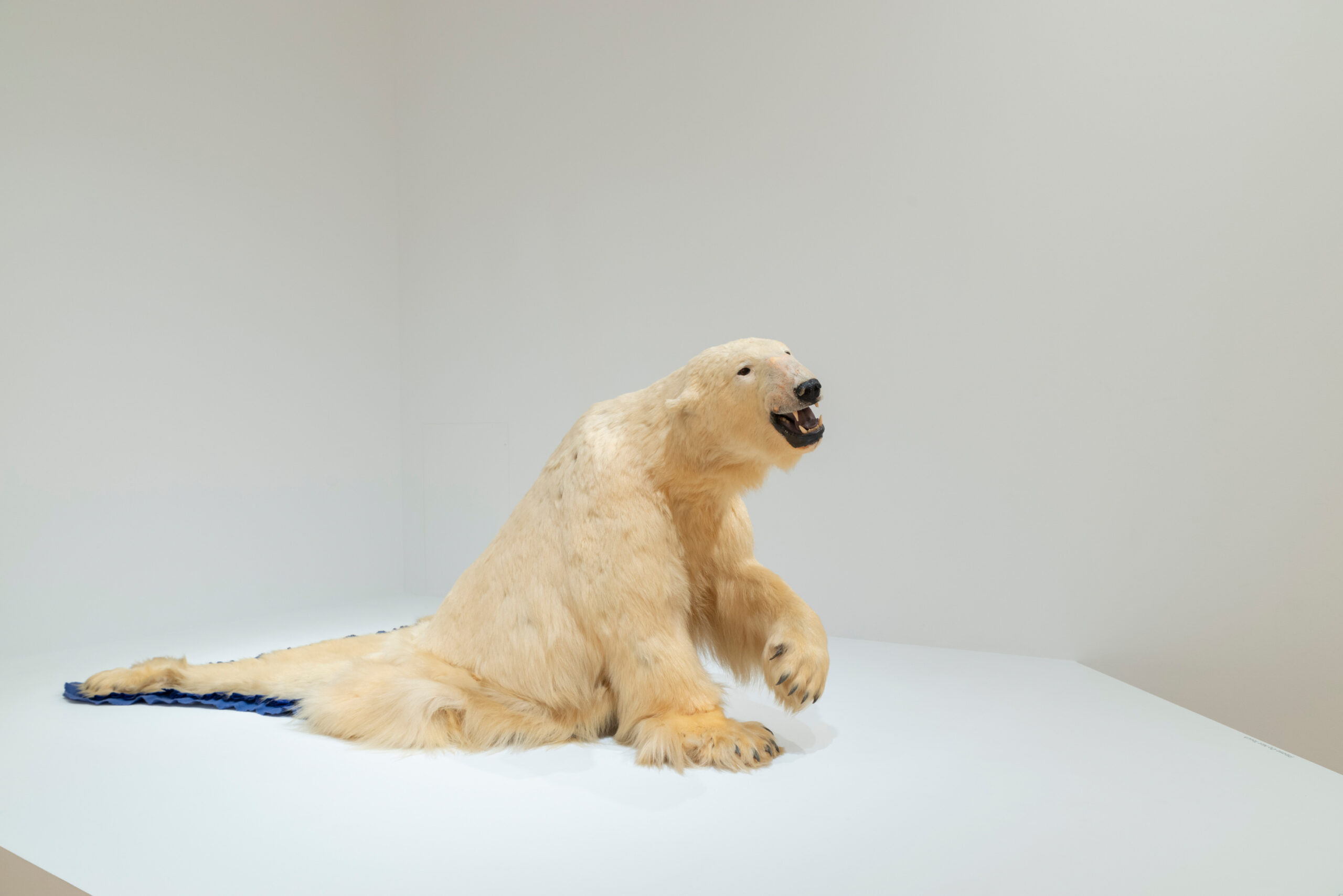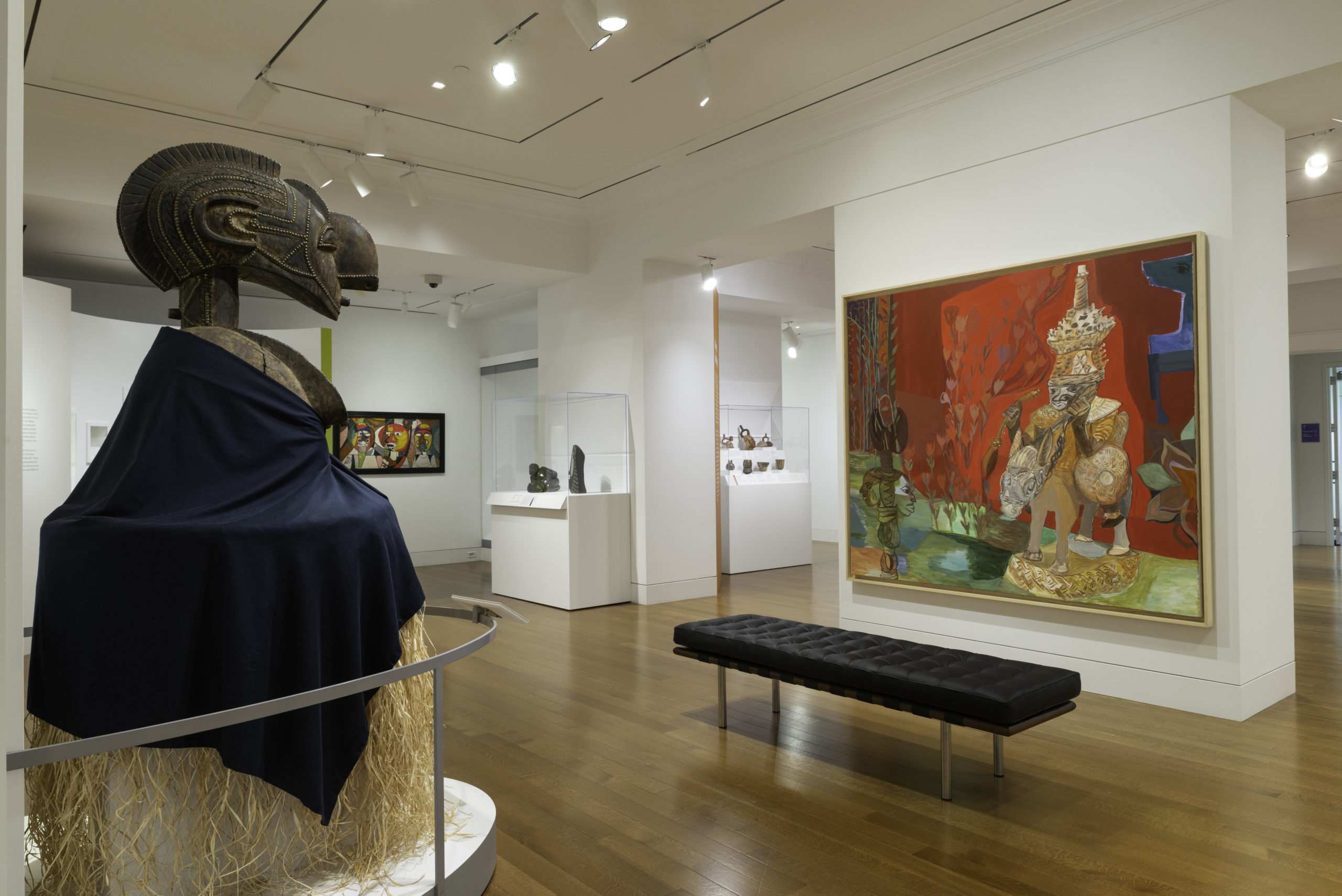
Paintings on view in the African and American art galleries both reflect and transcend the moments in time in which they were made
Recent visitors to the African art galleries on the BMA’s first floor have been drawn to the vibrant reds and rich crimsons that dominate Ficre Ghebreyesus’ Red Room. The painting is situated directly across from D’mba, the Great Mother Headdress that is a beloved highlight of the BMA’s African collection in the Alan and Janet Wurtzburger Gallery. She seems to be contemplating Ghebreyesus’ work, and this is a tableau the Museum’s curatorial team considered carefully when installing the works.
Works of art nearly always offer history lessons, whether through subject matter, media, or the lived experience of the artist. The relationship between art and history was central to the reinstallation of the African art galleries in December 2021. Kevin Tervala, Associate Curator of African and Oceanic Art and Department Head of the Arts of Africa, the Americas, Asia, and the Pacific Islands, wanted to highlight historical factors that shaped African art during the past 2,000 years while emphasizing that African art encompasses more than ceremonial and religious objects. “African art is historic and it’s contemporary. It’s textiles and clay works; it’s photography and painting. It’s everything,” Tervala explained.
Featuring a 21st-century painting in the gallery supports the goal of broadening visitor understanding of African art, and Ghebreyesus’ piece is an exemplar, demonstrating how contemporary African artists are using historic African forms to convey new messages steeped in the social and cultural issues of the present. In Red Room, two historic artworks are depicted: an equestrian figure from the Benin Kingdom at right and a Yorùbá staff to the god Shango at left. Together, they offer a view of cultural entanglements that existed across the western Nigerian region over millennia. They are situated within a vivid red plane that is likely a nod to Henri Matisse’s red room paintings. Asma Naeem, the BMA’s Interim Co-Director and Eddie C. and C. Sylvia Brown Chief Curator, has noted, “While many have unpacked Matisse’s deployment of non-western signifiers, no other artist has embedded Matisse within the African continent with such brutal specificity and as successfully as Ghebreyesus.”

Ghebreyesus tied together history and art across continents and across time. His own history played into his artistic practice. Born in the east African country of Eritrea, he fought for Eritrean independence against Ethiopian forces and was ultimately exiled from his home country. He traveled across the world as a refugee, and when he finally established himself in the United States, he spent a lot of time with historic African artworks in American art museums. It was a way for him to reconnect with his home, according to Tervala.
“One of the things I love about this work is that it reflects the power of African art collections in American art museums. We live in a global world, one where people are always moving—sometimes by choice, sometimes forced by circumstances. Caring for and displaying artworks from around the world allows us to make sure that everyone sees themselves and their histories represented in our galleries,” Tervala said.
American Modernism
Like Ghebreyesus, the American artist Walter Henry Williams made works that reflected the history of his times and his own identity. Consider the painting A Quick Nap, currently on view in the Dorothy McIlvain Scott American Wing as part of the American Modernism: 1900-1950 collection installation. It is situated in a section of a gallery focusing on images of cities, as urbanization was an important social force at play during the first half of the 20th century, explained Virginia Anderson, Curator of American Art and Department Head for American Painting & Sculpture and Decorative Arts. During this period, America reoriented itself dramatically, with larger populations—shaped by immigration and migration—living in cities than in rural areas for the first time in the country’s history.
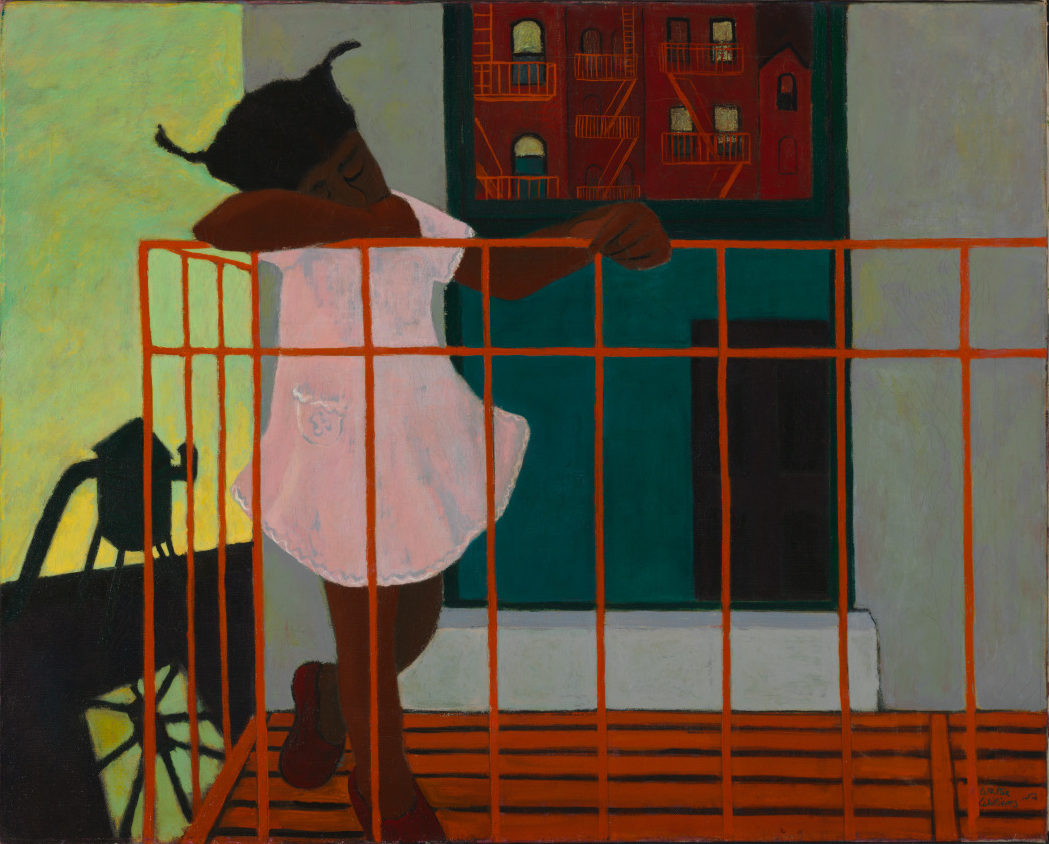
For the visitor viewing A Quick Nap in the galleries, to the right is an angular welded steel and pewter sculpture titled The City by Baltimore artist Elsa W. Hutzler. To the left is The City and I by O. Louis Gugliemi, a painting that conveys the artist’s anxieties about the urbanization of Manhattan.
The canvas of A Quick Nap itself displays a young Black girl daydreaming on the fire escape of an apartment building. According to Anderson, “The painting contrasts her wistful pose with the grid of the railings and the buildings across the street that are reflected in the window behind her. It invites the viewer to wonder what she’s thinking about, and where will she go from here?”
It also draws on personal history. Williams was born in Brooklyn in 1920 and grew up in New York as skyscrapers began to populate the skyline. Williams later spoke about the feelings he had when he was painting, saying, “All my life I have been painting one picture. It is the picture that shows my soul and inner thoughts. When I am working, I feel a child’s naivete.” Anderson sees this scene as imbued with empathy for the interior life of children, depicting the urban landscape filtered through the imagination of a child.
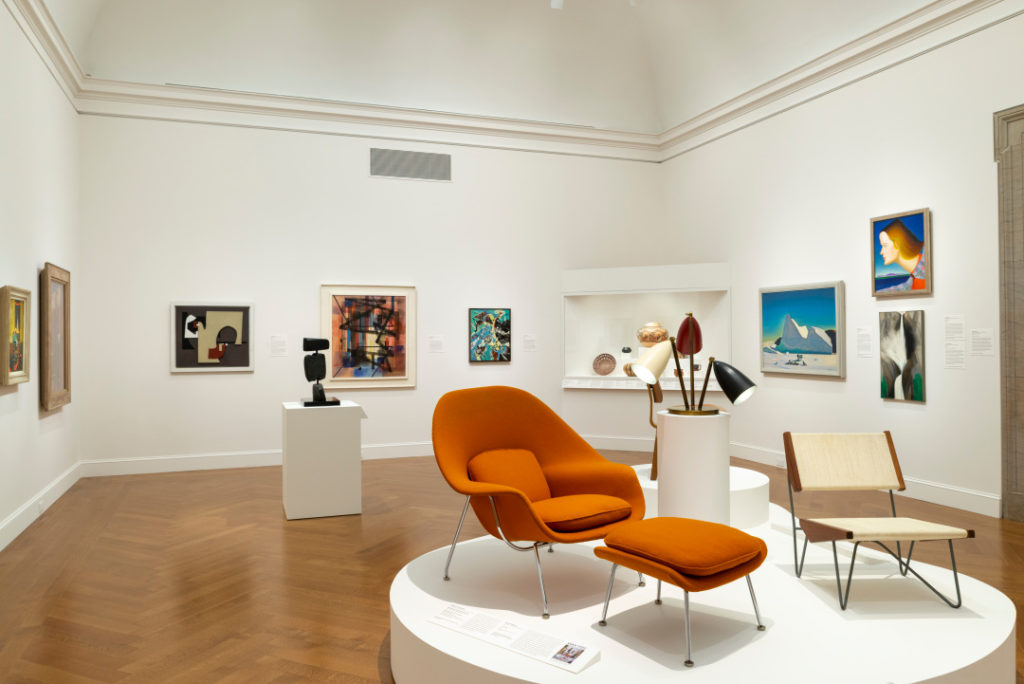
This article first appeared in the fall 2022 issue of BMA Today, the BMA Members‘ magazine.
The collection installations of art from Africa, Oceania, and the Ancient Americas are generously supported by Christopher & Pamela Hoehn-Saric, The Gladys Krieble Delmas Foundation, Amy L. Gould and Matthew S. Polk, Jr., David and Gayle Ackley, Sandra Levi Gerstung, David and Elizabeth J. Himelfarb Hurwitz, Dr. Gregory K. Lehne, and Dr. and Mrs. Robert K. Schreter.
The American Modernism installation is generously supported by the Sigmund M. and Mary B. Hyman Fund for American Art.


